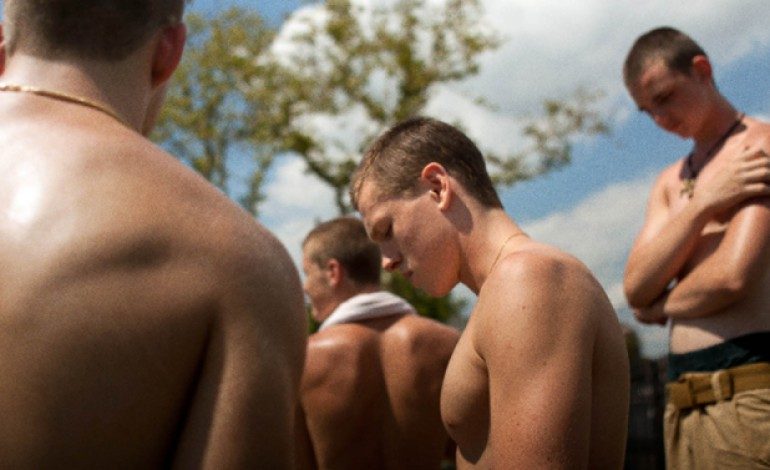

At first glance, Eliza Hittman’s Beach Rats faces the gut-reaction comparison of it being called “the white Moonlight” continuing with that film’s themes of repressed sexuality in an environment of magnified masculinity. Although similar, Hittman’s film stands completely on its own and touches new ground visually, narratively, and through the subtly monumental performance from her lead actor Harris Dickinson. A coming-of-age, coming-of-sexuality tale is told from a very singular, isolating and individual perspective, but affects its audience with a lasting sense of universality that will have viewers clutching onto their own sense of self as Hittman’s protagonist finds himself, loses himself, and finds himself again in the span of a couple hours.
Beach Rats crash lands into the story of Frankie, a teen of unspecified age surviving the heat and monotony of a Brooklyn summer trolling the Coney Island boardwalk with his “friends”, doing drugs alone and socially, and bumming around town while dealing with familial and personal issues at home. His father is dying of cancer, his younger sister is beginning to develop into a woman, and his mother is treading water while dealing with a sick spouse, hormonal teenagers, and her own life concerns. While dealing with these issues as well as a cute girl who has recently entered his life (Madeline Weinstein), Frankie spends his alone time surfing live gay webcam sites. As Frankie gets deeper into this world, he begins meeting older men at the beach and eliciting sexual experiences while keeping it all a secret from his family, friends, and the girl he is presumably dating.
Hittman tells this story largely through atmospheric and richly specific visuals. Her focus on Coney Island and the lower income atmosphere of Brooklyn, especially, creates environments of gritty and raw experience in which a specified urban masculinity runs rampant. This also influences the film’s unique perspective and funnels every visual into this particular masculine feeling. Playing into the film’s summer setting, Hittman’s visuals especially explore ideas of skin. Rather than skin color (everyone in the film is essentially white), close ups of bare skin and bare backs of men, women, children, and adults challenge the sexualization, the novelty, and commonality of skin and its role in informing our worlds, personal and social.
Additionally, Hittman tells a highly nuanced story exploring various instances of isolation. Directly within his character, Frankie isolates himself in countless ways, from hiding himself away in his family’s basement to talk to men online, to doing drugs to escape within his own mind, meeting strangers in isolated, dark patches of the beach, and avoiding involved discussions about what he might be thinking. Visually speaking, Hittman accomplishes this feeling of isolation in a new way in nearly every single shot, playing with the light and dark of a chatroom, or the beach lit by moonlight, or the conspicuous closeness or separation of bodies in a scene. The isolation builds upon Frankie’s repression, and in turn gives the audience a sense of his inner life without him ever revealing it verbally. Hittman is expertly meticulous in her visuals, and it makes for an intoxicating viewing experience.
The film then blossoms to life through the quietly explosive performance of Harris Dickinson. Entering the world of a soft-spoken character affected deeply by harsh life experience, but also nubile to the world of personal and sexual invention, Dickinson has the rough challenge of presenting an unsure character through selective dialogue, restricted body language, and experiential plot events. Frankie has his outer world down to a science, so that while he struggles internally to maintain an idealized masculine facade with his friends and the girl he is seeing, he also adopts a similar way of moving when alone with the older men. While performing the same persona to everyone, – gay, straight, or otherwise – he fights the real struggle internally in his wavering decision of who he really wants to be. Dickinson plays this dichotomy in the subtlest of ways while presenting Frankie’s fully realized external self to the world of the film.
Verdict: 4 out of 5
Beach Rats is a film that is truly immersive, from its setting, secondary characters, and story of personal discovery, to the internal and external struggle faced from hidden secrets, inner worlds, and sexual repression. It is a film rooted in a palpably raw atmosphere, adding immensely to the stakes of its protagonist’s personal demons, decisions, and consequences. Hittman’s exploration of sexuality takes on a daring new form as her character Frankie goes so deep into a convoluted maze of sexual identity that he barely surfaces by the end. While this makes for quite an adventure throughout much of the film, Frankie’s somewhat unfinished narrative may leave the audience grasping for something a little more substantial by the end credits.



